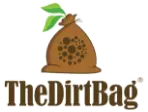
Sprawling, green lawns are the norm in Utah. Even though we’re an arid, desert climate, a lush, soft lawn is important to most people in the state. These lawns are often not sustainable, and the overuse of water and fertilizers is a practice we all need to steer clear of. This isn’t to say that having a beautiful lawn in our state is unachievable, rather we need to work with our conditions to make sure we’re creating the healthiest lawn by using the best practices for our region. Here are some great tips for maintaining a gorgeous lawn from the SLC.gov Sustainability website without using pesticides, fertilizers, or too much water:
- Reduce weed growth and create a healthy lawn by improving your soil’s health. You can do this by aerating each spring to reduce compaction, reducing thatch layers, using organic amendments such as compost or lawn clippings, and mowing on a higher setting (3-4 inches).
- Add about a quarter to a half inch of compost each spring and fall. This will help provide essential nutrients all year round.
- Consider adding molasses to grass. Mix molasses with water and apply to the grass (and plants, too), which will feed it healthy microbes.
- Do not overwater your lawn and avoid watering during the heat of the day. It’s best to water before 10am, and you should give your lawn two to three deep waterings per week rather than a little every day. In spring and fall, lawns need about an inch per week, and in the heat of the summer, you can up that to about an inch and a half. It does not need more than that if you’re following these suggestions. When lawns need more water, it’s because the soil is compacted and/or the roots are not getting deep.
- Incorporate native plants in your landscape. Native plants have adapted to local conditions and their hearty aptitude means they won’t be easily pushed out by unwanted plants or weeds. Diversity in a landscape is a great way to keep everything healthy. Plus, it looks attractive, too!
- If you need to use fertilizers or pesticides, used natural products and organic matter. For example, peppermint oil and neem oil are great alternatives to chemical pesticide. And high-quality organic compost will provide nutrients for a variety of plants and grasses.
- Keep your yard decluttered to discourage pests, which can be problematic for grasses, plants, and gardens. Remove standing water if possible, and don’t leave food out as it will attract bugs and pests.
- Consider an alternative to grass, either as a replacement of your lawn or in specific areas when lawn isn’t required. Creeping thyme is tolerant to frequent foot traffic, needs to be moist but not wert, and handles full sun or partial shade. Roman chamomile and moss both also tolerates foot traffic once established and is a fun alternative. White clover is a great, drought-tolerant option, but it is not suitable for high traffic areas.
For healthy lawns, flowers, and gardens, visit The Dirt Bag for advice and quality, natural products.


